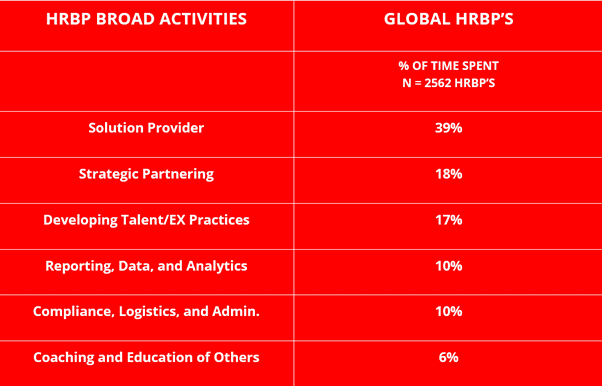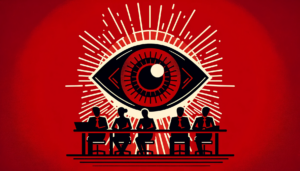Implementing business-driven HR: Avoiding middle-management “sabotage”
- 5 Min Read
In the first of a series of Q&As for HRD on implementing business-driven HR, Max Blumberg and Dave Millner present the crawl-walk-run method for implementing business-driven HR whilst avoiding middle management resistance.
- Author: Max Blumberg and Dave Millner
- Date published: Aug 17, 2023
- Categories

In a world marked by fierce competition and limited resources, the shift towards implementing business-driven HR is no longer a mere trend but a business imperative. Executives demand that all functions, including HR, align visibly with the company’s strategic goals. Therefore, Max Blumberg and Dave Millner stress that this transformation towards ‘business-driven’ HR is inevitable and essential.
In the first of a series of Q&As for HRD on implementing business-driven HR, advocates Blumberg and Millner provide critical advice on:
- A ‘crawl-walk-run’ methodology for implementing business-driven HR
- Steps for circumventing resistance or ‘sabotage’ from middle-management
- The implications of ignoring business-driven HR
1) What is the biggest bottleneck organizations face when implementing business-driven HR?
Max Blumberg: A well-executed business-driven HR model creates a beautiful seamless causal chain, linking the right people processes to essential workforce capabilities, enabling strategic capabilities to achieve desired business outcomes. However, many HR functions either confine themselves to implementing generic, off-the-shelf people processes without ensuring they cultivate the required workforce capabilities or concentrate solely on delivering them without fostering the necessary strategic ones. This disconnect often originates from HR educators who prioritize people processes and workforce capabilities, neglecting to illustrate how these elements contribute to strategic capabilities or overall business success.
HR functions concentrating solely on mastering people processes without ensuring that these processes cultivate the right workforce capabilities are unlikely to achieve the strategic capabilities needed, such as productivity. To effectively address business problems, it’s essential to understand and establish the connection between people processes, workforce capabilities, and the specific strategic capabilities required to meet business goals.
While senior and entry-level employees often embrace such significant changes, middle management may resist. Therefore, the transformation to business-driven HR must be systematic and strategic, carefully navigating resistance by aligning with broader company objectives and addressing skill capability gaps.
2. Can you outline the “crawl-walk-run” method you recommend for implementing business-driven HR?
Dave Millner: The crawl-walk-run method focuses on evolving any HR structure or team to achieve anything demanding and complex in a phased approach.
The crawl means understanding the strategy and the different approaches to HR and piloting it in a certain business unit or region. Start small and prove the value. Smaller organizations might want to get a workforce capability consultant to act as the strategic link working with whatever small HR team exists.
The walk is then trying to identify and plan for the required capabilities from the business and the HR team. How are we going to drive people to be more agile, collaborative, and influential? And what capabilities do we no longer need?
The run is once you’ve learned the lessons and you’re starting to see areas where it is working. You now can change all the processes and structures to implement the model across the entire organization. This approach builds the basic workforce capabilities, gets the governance and project framework in place, and then allows you to reconfigure centers of excellence into the talent process design and management area.
3. What initial planning and considerations should HR leaders make before beginning the crawl-walk-run approach?
Dave Millner: We’ve got to be focused and aligned with the business strategy and the goals that the leaders are trying to achieve. Within HR, we’ve got to start aligning our initiatives, our programs, and our talent practices with these objectives.
To do so, we have to prioritize our resources. HR has never been a resource-intensive function. I see too many HR leaders doing operational activities. Research that I’ve collected over the past 2 years highlights that for example HR Business Partners spend significant periods of their time focusing on resolving today’s ‘operational puzzles’ rather than on strategic priorities (see table below). We need to analyze and change the processes, systems, and workflows that HR is using and also change the current mindset; that means challenging people managers to be truly accountable for resolving their own people issues and not leave it to HR to come up with the easy solution.
The business-driven HR model requires a change in approach and the splitting of functions in a very clear, distinct way to try and drive better technical expertise across our function.
4) What capabilities do HR teams need to develop to ensure business-driven HR delivers the value it promises?
Max Blumberg: The underlying theme here is that capability-wise, HR teams must understand the organization’s required strategic capabilities and desired business outcomes. In other words, an additional critical capability required of HR teams in a business-driven HR function is deeper commercial understanding.
5) What are the implications of ignoring the need for implementing business-driven HR?
Max Blumberg: Evaluating the capabilities of your HR team is essential. I recall consulting at a large shipping company where a young, high-potential employee contemplated moving to a competitor due to lacking opportunities to engage in business strategy. I suggested the company offer him a sponsored MBA and a job rotation program to provide this exposure. They agreed, and eight years later, he’s still with the company, now serving as a Senior Manager. He credits his growth to realizing that a world beyond HR encompasses business strategy—a perspective he might never have gained had he remained confined to his previous HR role.
The underlying message here is that businesses must become leaner and more competitive in an environment marked by limited resources and demanding shareholders. The path to achieving this lies in adopting a more business-driven approach across the organization. While executive teams usually grasp this concept quickly, traditional HR professionals may be slower to adapt. It’s incumbent upon HR to align with this business-driven mindset if they are to remain relevant and effective in today’s competitive landscape.










